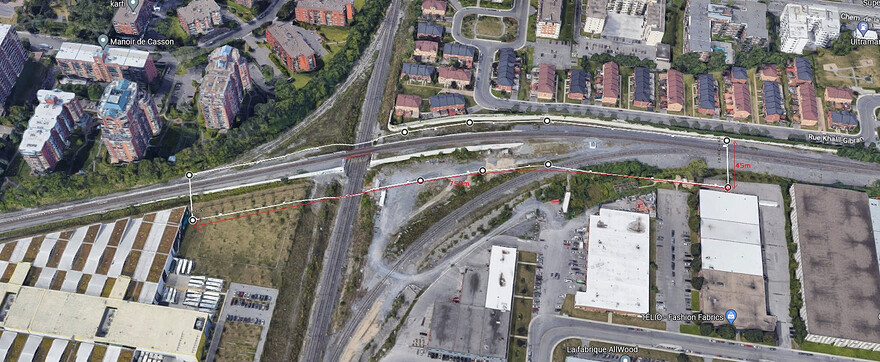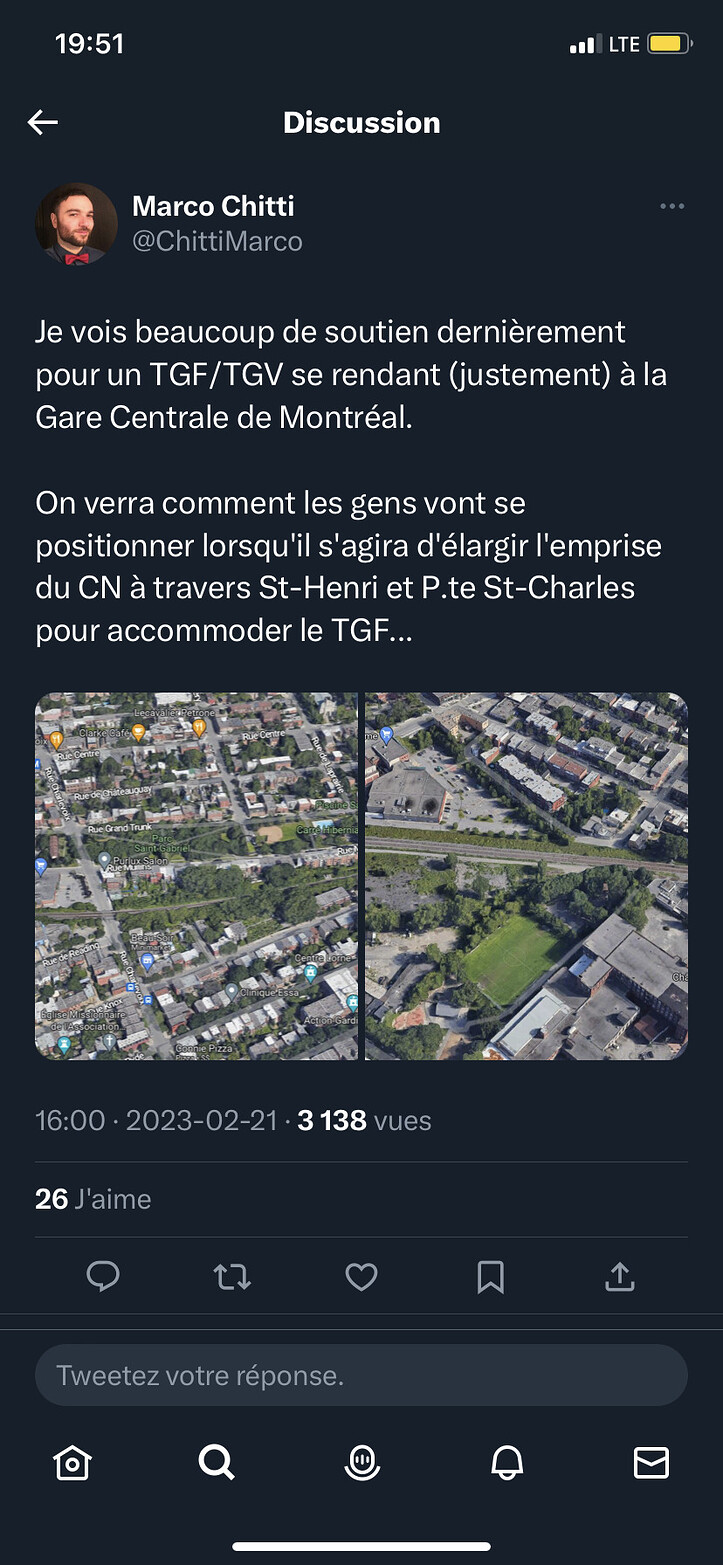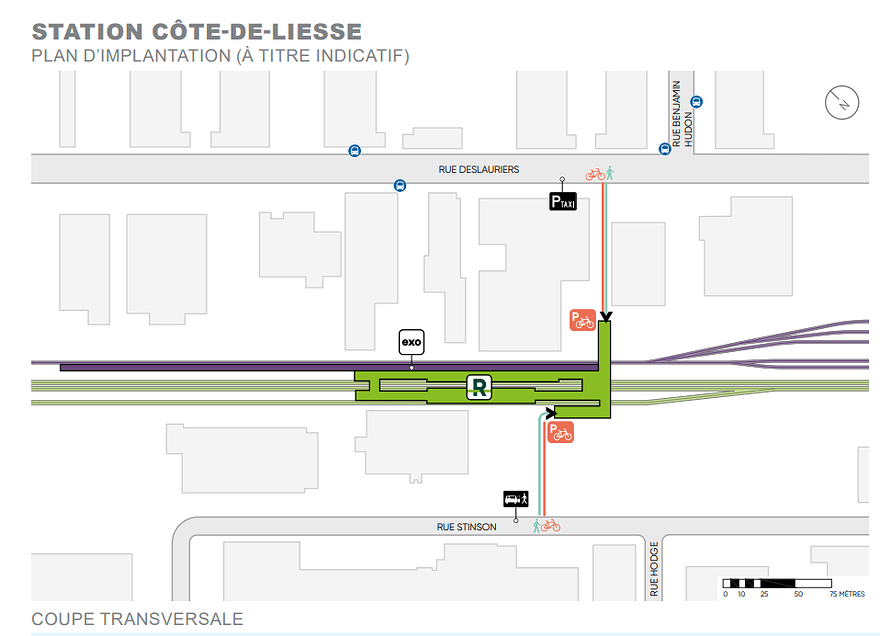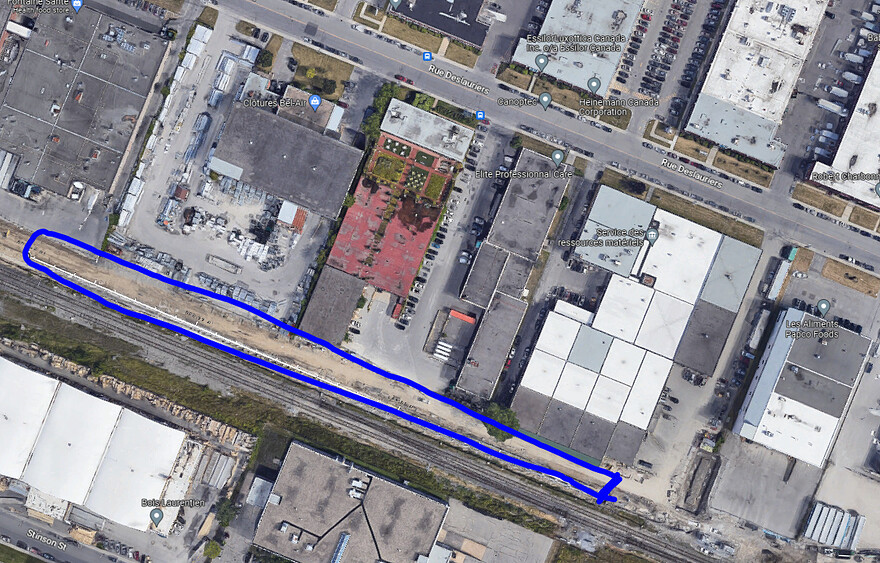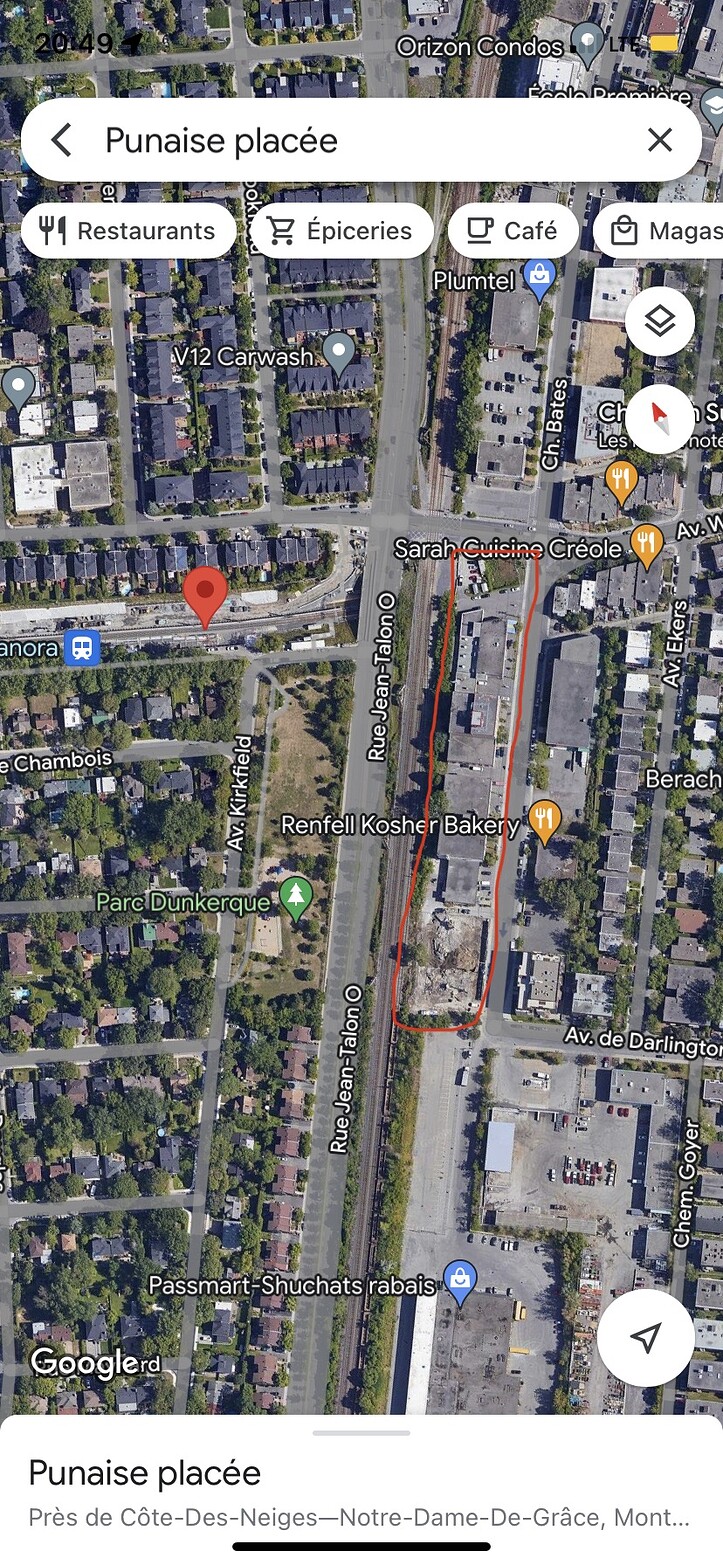That’s basically what Alstom was proposing on the map that we saw. Realistically, we cannot go beyond 100km/h on the island of Montreal since that’s the maximum speed that curves are built for. With banking, we can increase that speed a bit, but the curves would still seriously limit the maximum speed that can be reached.
I am pretty sure we are basically saying the same thing. For the kind of money it would cost to develop a brand new line towards the north through Laval, we could just as easily develop a much more direct, dedicated line within the current right of way over the Victoria bridge, only sharing trackage with freight trains on the small segment from Bridge to Saint Lambert. If we are considering the Montreal-Toronto HSR segments as running “once an hour” and Quebec trains only a few times a day, there is no reason the Quebec trains can’t deal with the Victoria bridge and the occasional freight train. The federal government can most definitely impose upon the class one railways that in certain segments, the freight trains must yield to the intercity train.
No recent and official numbers. However, we do have old numbers, from the EcoTrain report, and non-official numbers from things like Alon Levy’s gravity model (see post 482 above).
From Quebec, we should expect around 2 M pax/yr, 5500 per day, with half going to Montréal and half further west (mostly Ottawa/Gatineau and Toronto). That’s enough to fill an HSR train about every 2 hours.
So, to help with some of the sticking points above,
Yes the REM has enough capacity to handle 5500 extra trips per day.
No, it’s not okay to suppress half of the potential Quebec City ridership by insisting they schlep between two stations to connect between trains. However, this connection could be done at Dorval more cheaply (and faster) than in downtown.
Yes, given the low ridership, it probably doesn’t make sense to build out 300km/h rail to Quebec, but an significantly upgraded route to the existing service is warranted. Fortunately, running a 200 km/h service on the north shore could be done fairly inexpensively, with the Charger trains Via is currently purchasing, while maintaining minimal freight access along the corridor.
How old are these old numbers?
Also don’t forget to take into account Jevons Paradox: Increased efficiency increases demand. There was a post earlier highlighting that improving the Acela increased rideship by 3x. To Quebec, I expect more than that, and amplifying seasonal swings (tourism, festivities).
To me a 200km/h train maintains rideship. A 300km/h train increases overall rideship, not just displaces it.
IE in terms of total trips: HSR + car + bus + plane >> HFR + car + bus + plane
I am not sold in the conclusion that that HSR to Quebec is not profitable, nor am I convinced that it is profitable.
Besides, the decoupling of Windsor-Toronto, Toronto-Montreal, Montreal-Quebec should allow to manage the frequency separately. Toronto-Montreal I suspect that even a train every 30 mins would be viable.
Not just tourism… Trois-Rivière is about midway between Montreal and Québec. With HSR, there are likely some peoples who would be willing to commute to work daily. That’s actually a thing in many countries. With the price of houses increasingly out of reach in Montreal, a daily commute of an hour and a half morning and afternoon does not seem that bad to have a house at a reasonable price with a large lawn. Trois-Rivière is likely to grow very quickly if HSR ends up being the option that is retained. We can expect that land in Trois-Rivière would be bought in advance and rapidly developed after the opening of the line.
How much space a (small) Gare du Nord station would likely occupy, not easy to place in the existing ROW.
My own idea based on those numbers, with the added benefit of a sliglty shorter walk to Montpellier Rem station and more available space, but a more complicated (expensive) construction above the existing Rem line.
En regardant cela, je pensais plutôt à une connexion à la future station Côte-fe-Liesse à cet endroit, de façons à être réellement à côté d’une station de métro (REM) et ainsi faire une transition rapide vers celui-ci à l’arrivée à Montréal.
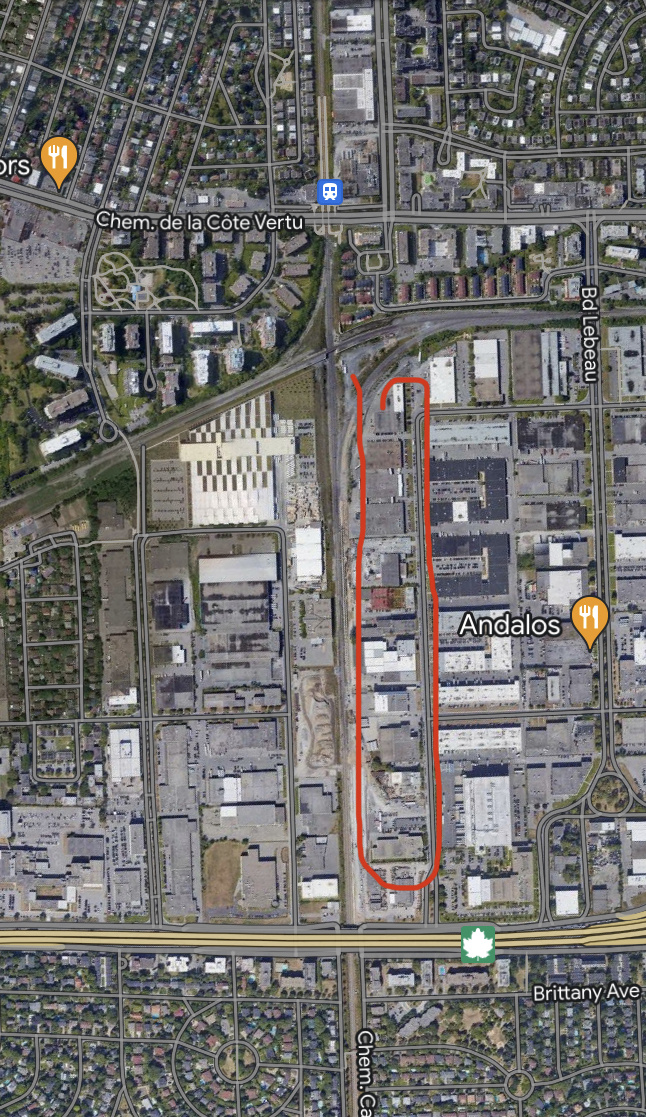
To slove this, let’s look at some accessible numbers from the 2021 Census and work project priorities down:
| City | Population |
|---|---|
| Toronto | 6,020,225 |
| Ottawa | 1,488,307 |
| Montreal | 4,291,732 |
| Total | 11,800,264 |
Going true HSR for the Montreal- Ottawa- Toronto segment is a no brainer given there are 3 major cities with a total of 11.8m inhabitants and each equipped with a decent transit system along the way. They are also respectively the largest economic hub, capital and second economic hub of a G7 nation.
Tangible time savings compared to HFR and the actual situation can be obtained with HSR, as the EcoTrain study concluded.
Therefore, since this segment will be driving the volume, it is the one that has to be prioritized in terms of speed and optimal station localisations in all 3 cities, in Montreal, this is Central Station, conveniently accessible from the west island via the CN alignment. It is a no brainer for trains from Toronto and Ottawa.
Now comes the question of what to do with the segment to Quebec City, either by the north shore, either by the south shore. Eventhough Trois-Rivieres has a population of 161 489 and a small university campus (UQTR), there is more population in the 3 regional centers outside of Montreal and Quebec City metro areas:
| City | Population |
|---|---|
| St Hyacinthe | 50,616 |
| Drummondville | 101,610 |
| Victoriaville | 52,936 |
| Total- South shore | 205,162 |
There is absolutely no rationale in completely bypassing downtown Montreal, reducing the service quality for the main market of to “better” serve the secondary market in the corridor that is Quebec City and anything east of Montreal. Altogether this 1.2m inhabitants market including the south shore is only 10% of the Montreal-Ottawa-Toronto triangle.
It would hoever make sense to seriously study if this whole market is better served by one line (mabye HSR if worth it) or 2 HSR type routes on the north and south shore, given the shorter distance between Montreal and Quebec.
Alors certes, mais il y a juste un petit souci, je dirais même 14 soucis, dans la forme de 14 bâtiments qui occupent tout l’espace décrit. Certes c’est pas des habitations, mais juste les coûts d’expropriation pour une telle surface de bâtiments vont monter en plusieurs centaines de millions, à ce prix autant faire un tunnel vers la Gare Centrale.
Et en plus ça ferait une station cul-de-sac, ça casse un peu le but de sauver du temps en évitant le détour gare centrale sur le trajet traversant.
Se rendre à la gare centrale pourrait être plus complexe que l’on pense également. Mais tout de même possible.
Lucien L’Allier ? Haha
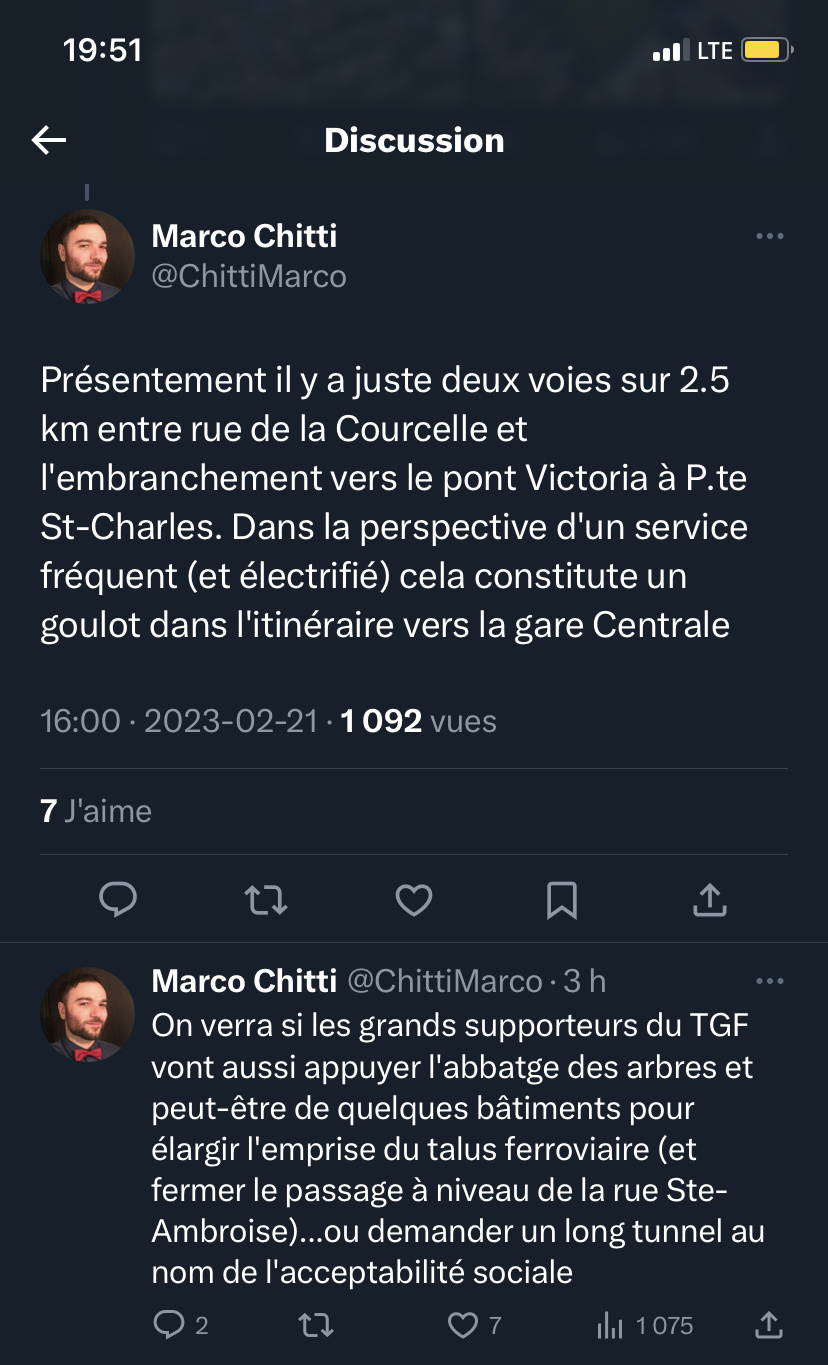
Dépenser quelques milliards pour sauver quelques centaines de milions sur le projet?
N’oublions pas qu’une gare de correspondance avec le REM est déjà en construction et appartiendra au gouvernement du Québec.
Bien qu’elle soit avec un seul quai, elle disposera de quelques voies de garage au bout.
Dans l’optique de la survie (incertaine) du train de l’est avec sa poignée de trains quotidiens, il m’apparait tout a fait plausible qu’avec une bonne coordination il soit possible de partager cette gare entre EXO et la ligne vers Québec, dans l’optique que les trains provenant de l’ouest aient leur terminus à la Gare Centrale.
À l’extrême limite en cas de besoin, une seconde voie et quai à l’est pourrait être envisagés en expropriant quelques fonds de cour sur Deslauriers.
Je voyais un plus grand potentiel de redeveloppement en, oui, expropriant plusieurs propriétés commerciales/entreprises près de la gare Côte-De-Liesse, mais avec plus d’options pour construire une belle grande gare. Je crois que les terrains qui entoureraient celles-ci seraient presque automatiquement voués à être redéveloppés.
Les autres options :
Gare Lucien l’Allié avec le trajet présenté par Alstom (avec un retour pour aller vers le Nord). Cela forcerait à finalement rénover cette gare haha.
Gare Canora du REM. On détruit ces bâtiments qui longent la voie ferrée (voir image plus bas) et on construit une Gare du Nord (7 min de REM pour se rendre à la gare centrale) avec un accès souterrain vers la station du REM.
Dans cette dernière option, je crois bien que cela fait partie du trajet proposé/retenu initialement par Alstom.
Considérons également les points suivants :
- 1 quai est insuffisant pour accueillir un éventuel train à haute fréquence en plus du train de banlieue (conflits d’horaire à prévoir, en particulier en cas de retards), et après l’heure de pointe du matin, les 5 voies de garage à Côte-de-Liesse seront occupées par les trains EXO
- La correspondance facile et rapide entre la ligne Mascouche et le REM, combinée avec la refonte des tarifs va contribuer à augmenter significativement l’achalandage de la ligne (+ de destinations possibles : accès rapide à UdeM, Centre-Ville, rive sud, Saint-Laurent, Aéroport, etc);
- En cas de nécessité d’expropriation, je ne pense pas que la plupart des commerces entre la voie ferrée et la rue Deslauriers aient une valeur excessivement élevée : ce sont pour la plupart des entrepôts ou des distributeurs;
- En cas de nécessité de construction d’un tunnel supplémentaire sous le Mont Royal vers la Gare Centrale, n’oublions pas qu’une telle infrastructure serait nécessairement également très utile pour améliorer les services d’EXO, et je m’attendrais que - dans un tel cas - VIA veuille partager les coûts de construction d’un tel tunnel avec le gouvernement provincial, ARTM et EXO.
If you include St-Hyacinthe and Victoriaville, why don’t you include Shawinigan (49,620) and Nicolet/Bécancour (22 181) for Trois-Rivières?
There’s supposed to be 3 actually. Gare de la Concorde was planned from the beginning and the federal level seems to be dead set on using it.
Absolument, c’est également pourquoi je crois que ce site est au final le plus intéressant si on fait un terminus hors- centre-ville pour les trains venant de l’est. La gare en construction actuellement peut accueillir un service plus de base, mais une plus grande gare y serait facilement réalisable, contrairement à Canora qui a plus de contraintes autour.
Exact, et c’est aussi l’autre force du site CDL par rapport aux autres pour une ligne rive nord vers Québec, surtout Parc. 10 petites minutes en REM pour accéder directement au TGV vers Toronto ou 10 minutes dans l’autre sens vers YUL.
Ca dépend toujours ce qu’on entend par haute fréquence si c’est 1 train/heure on ne devrait pas avoir de probleme. Pour les voies de garage, rien n’empecherait de renvoyer les trains EXO a Mascouche, bien que moins optimal opérationnellement.
Very fair point, eventhough St Hyacinthe is directly on the alignment and could be served by “local” trains, along with Drummond and Victoriaville, the later one would be served by a station near the 55 where bus connections to Trois Rivieres could be made.
My overall point is more that eventhough it is is spreaded out in 3 smaller towns, there is still a similar “urban” population on the south shore route. Take the 20 towards Quebec City on a weekend day if you don’t beleive it.
Mais personnellement, je ne séparerais pas le TGV Mtl-Toronto et Mtl-Québec, et je crois que l’intention des gouvernements et de réellement relier toutes ces villes pour créer un couloir économique fort.
Quelques centaines de millions pour exproprier ces bâtiments, c’est absolument rien en comparaison aux billions que ça coûterait pour construire un nouveau tunnel vers la gare centrale. On parle probablement de 1 billion just pour l’arrière gare et la rue Sherbrooke parce qu’il va falloir passer à travers les fondations de la place Ville Marie, ce qui requiert probablement de déplacer certaines des colonnes qui tiennent ce bâtiment debout. Il va également falloir passer en dessous du Complexe les Ailes qui n’a pratiquement pas de fondations et qui est donc beaucoup plus fragile qu’un bâtiment moderne.
C’est faisable, mais c’est absolument débile ce que ça va prendre pour réaliser un tel projet. Je pourrais me tromper, mais c’est probablement plus simple de creuser une nouvelle gare profonde à 80 mètres en dessous de la gare actuelle avec toutes les complications que ça implique pour l’accès.
Bold idea, on construit une nouvelle gare centrale 20m sous l’originale, on démolit la Tour Terminale et on y construit une nouvelle gare emblématique, genre un gros cube de verre. Ainsi la lumière du jour peut descendre jusqu’aux quais.
Why not Windsor Lucien L’Allier Station? And then have the train depart on the other end towards whichever city its headed towards?
